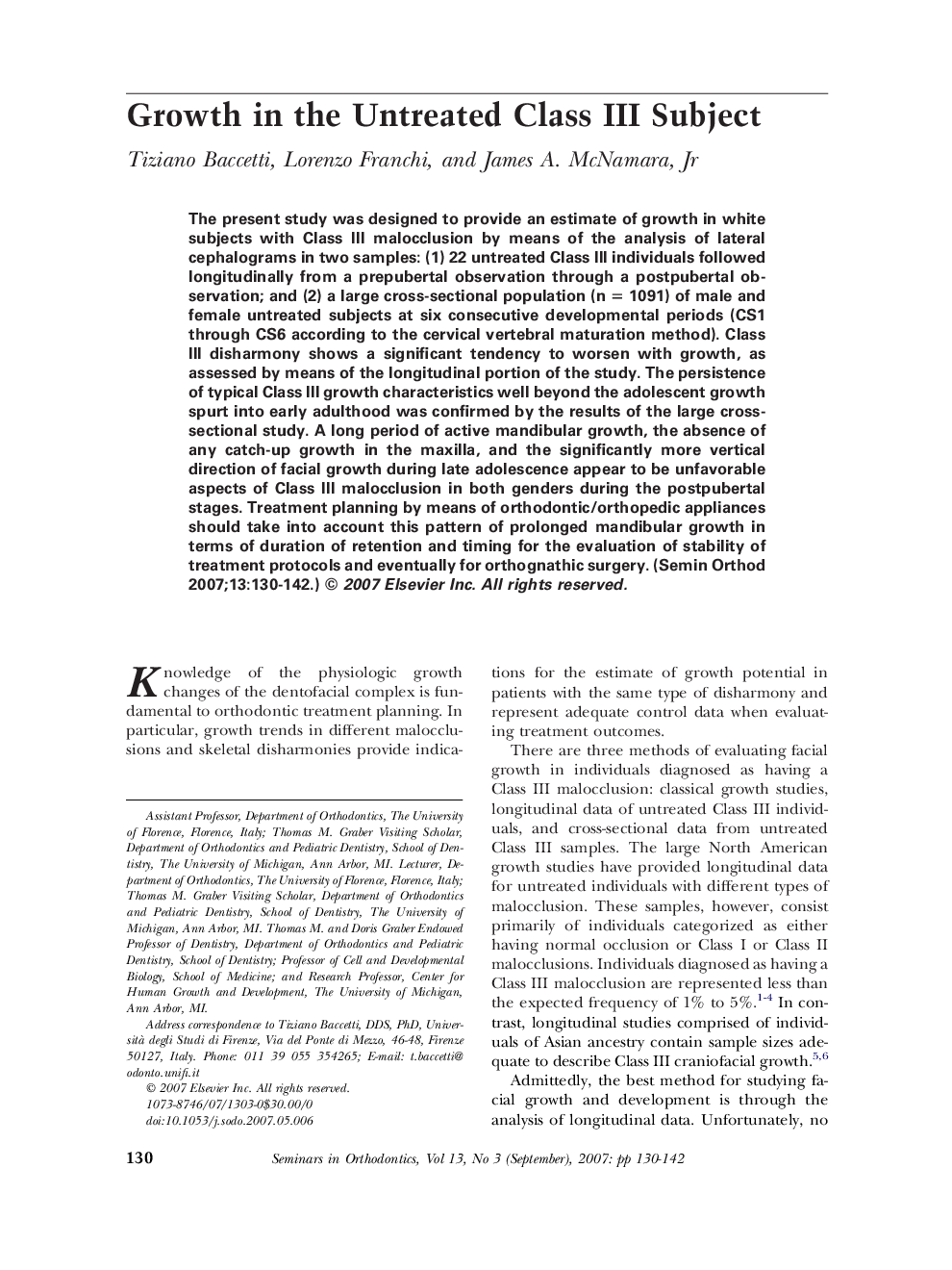| Article ID | Journal | Published Year | Pages | File Type |
|---|---|---|---|---|
| 3175774 | Seminars in Orthodontics | 2007 | 13 Pages |
The present study was designed to provide an estimate of growth in white subjects with Class III malocclusion by means of the analysis of lateral cephalograms in two samples: (1) 22 untreated Class III individuals followed longitudinally from a prepubertal observation through a postpubertal observation; and (2) a large cross-sectional population (n = 1091) of male and female untreated subjects at six consecutive developmental periods (CS1 through CS6 according to the cervical vertebral maturation method). Class III disharmony shows a significant tendency to worsen with growth, as assessed by means of the longitudinal portion of the study. The persistence of typical Class III growth characteristics well beyond the adolescent growth spurt into early adulthood was confirmed by the results of the large cross-sectional study. A long period of active mandibular growth, the absence of any catch-up growth in the maxilla, and the significantly more vertical direction of facial growth during late adolescence appear to be unfavorable aspects of Class III malocclusion in both genders during the postpubertal stages. Treatment planning by means of orthodontic/orthopedic appliances should take into account this pattern of prolonged mandibular growth in terms of duration of retention and timing for the evaluation of stability of treatment protocols and eventually for orthognathic surgery.
